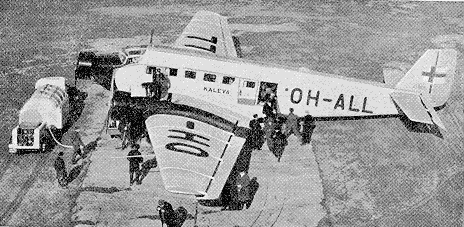Helsinki-Tallinn-Riga-Kaunas-Wilno-Warzawa-Krakow-Budapest, carriers: Aero Oy (Finnish), Polskie Linje Lotnicze Lot (Polish), Magyar Legiforgalmi R.T. "Malert" (Hungarian).
Source: Heikki Immeli & Kari Juntunen: "Piletti Pietariin" (Ticket to St. Petersburg). The centenary jubilee publication of the annually in multiple volumes published "Public communications in Finland". Finnish Tourist Association, 1991.
Aero O/Y (meaning Aero Ltd) changed its name to Finnair for marketing purposes already in 1953 and, finally, officially in 1968. The flight numbers, like AY543, still remind of the old company name. The Helsinki international airport (Helsinki-Vantaa) was moved to its present site in 1952. The previous Malmi airport (the new land-aerodrome in the article) serves now small aircraft traffic. However, the runway area of the historical airport is under threath of being converted to a residential area.
Back to the history page.
Takaisin historiasivuille.

